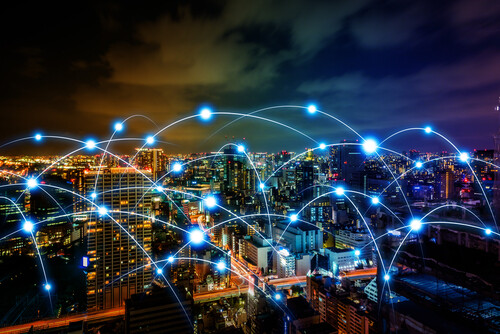In today?s digital age, big data is incorporated into many aspects our daily lives. Big data is essentially massive amounts of data that is used in order to drive strategic decisions. An example of how it is used in daily life is through using online maps such as Google Maps to take the quickest route to work possible. Through the collection of data, patterns of traffic congestion are produced to give you the best route. This benefits you, and it also helps the city and community have fewer cars on the road during heavy-traffic times resulting in both convenience and less pollution. As technology is constantly evolving, so are the ways in which it is used. Traditional processes are being updated and more cities are working to become ?smart cities?. There are expected to be 29 smart cities by 2025. Big data plays a critical role in smart cities, as it drives the implementation of the smart city vision. A 2018 study by McKinsey shows that smart cities are going to be highly dependent on big data.
Security
Big data can help control crowd movement and create a safer city for everyone. For cities where population growth and crowd gathering is of concern, this can make a significant change as big impact gives insights into when and why crowds form, how to meet the needs of the people, and how to keep them safe.
Sustainable infrastructure
There are many examples of sustainable infrastructure around the world, though a common denominator is the fact that this kind of infrastructure is directly linked to economic growth due to greater trade, reduced energy costs and overall long term planning, all factors that best support communities and the people. Big data gives insights into how spaces and structures are currently used and how they could be used. An example of sustainable infrastructure is the Panama Canal located in Panama City, which returns the city to its state as a center for world trade.
Transport
As with the daily life traffic example above, transport across a city is greatly improved through leveraging big data to assist in processes. For example, parking can be managed properly by collecting data on the cars that enter a parking structure. By collecting data, open spots in the structure can be tagged and it can be identified when the structure is full. This makes it both more convenient for users and encourage traffic flow elsewhere when a parking structure is full.
Resource management
From big data, city officials and businesses can practice effective resource management. For example, LED light bulbs can be installed for streetlights to reduce energy consumption and also provide greater safety with brighter bulbs.
Spending
A primary question for every city government is how to spend money. Big data helps to give great insight into this, which enables government to use its resources in more effective and intelligent ways.
Sustainability
Big data provides insights into how energy is used in a city and how and where a city can be more sustainable. Smart water meters, for example, can be installed in homes and businesses to boost sustainability measures and enable smart urban planning.
Conclusion
The insight that big data can provide for cities working to become smart cities is extensive. Before becoming a ?smart city?, a city must first understand what its current pain points are and how and where it can make effective improvements. In order to do so, it needs information and big data provides this information. The current status of big data is limited depending on the data that can be pulled, but as we move forward in this digital age, we can expect that more improvements will come. These improvements will provide a quality of life in the years to come that is much different than what we experience today.

